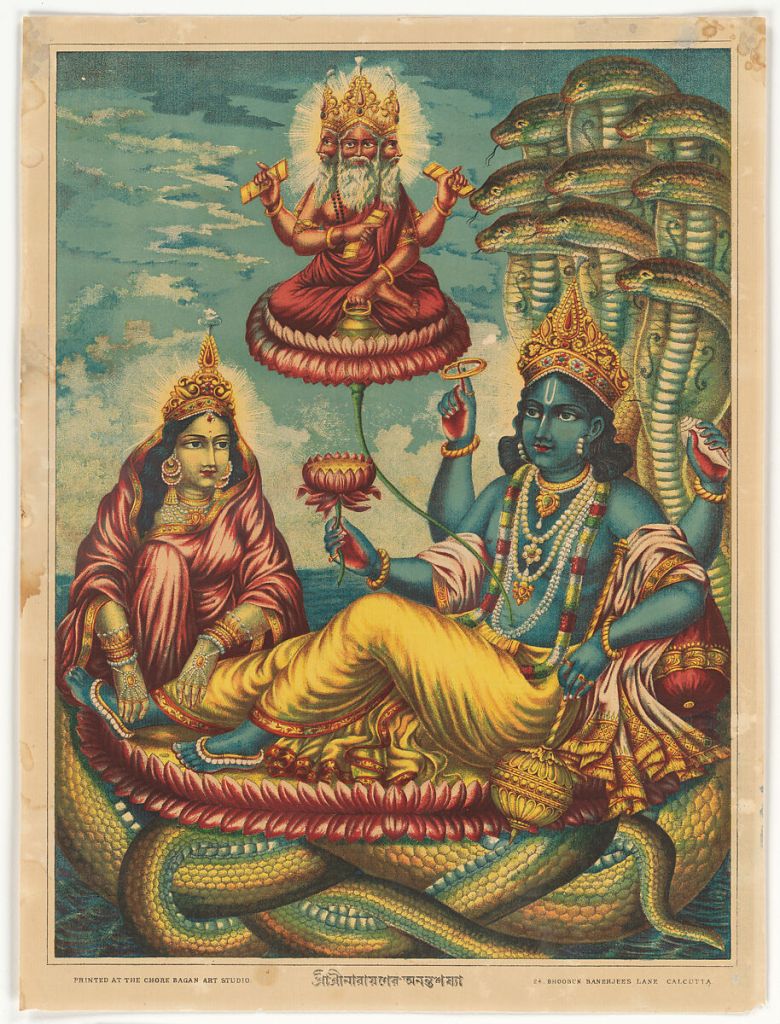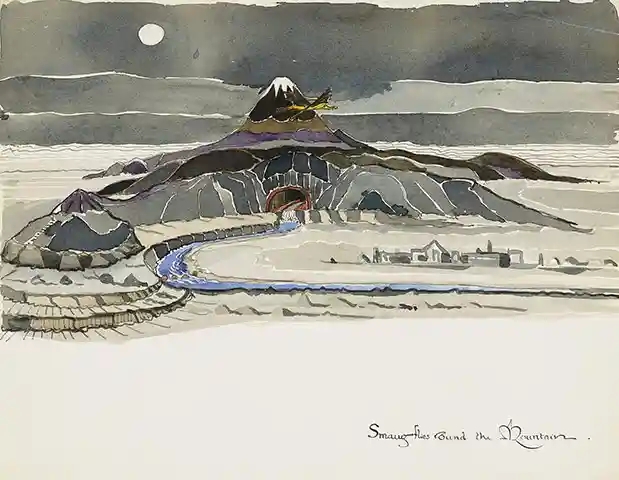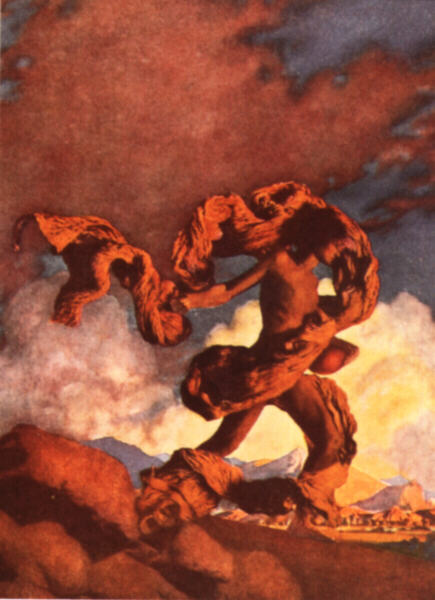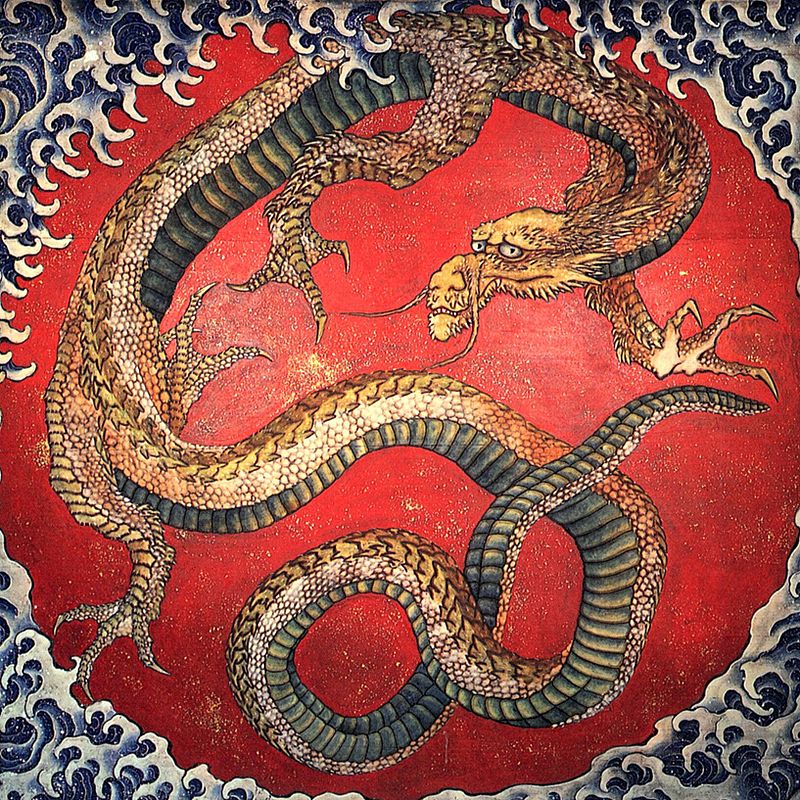“Dragons are subterranean, winged, smoke- and fire-breathing creatures, hybrid go-betweens in a magical bond between heaven and the underworld, where they guard secret treasures and reign over fires and concealed palaces.”
A description found on Dragon Path on Mount Pilatus (known as Dragon Mountain) in Switzerland
Dragons have manifested across virtually every culture throughout history. Humankind appears to possess “an instinct for dragons”, evidenced by the presence of a name for this mythical creature in the majority of languages. (1) Tolkien called his dragon Smaug, which is connected to the old Germanic word “smeugan” – to squeeze through a hole. In my native Polish we refer to it as smok, which takes us back to proto-Indoeuropean “smewk” – e.i. to slither, to sneak. In the majority of other European languages, including English, variations of the Latin term dracō are employed. This term is borrowed from the Greek δράκων (drákōn), which directly translates to “keen-sighted,” derived from the Greek δέρκεσθαι (dérkesthai) meaning “to observe sharply or keenly.” Not all scholars fully embrace this etymology but based on the language alone we have a stealthy creature with a keen sense of sight. It is worth mentioning that Greek drakontes had more serpent-like characteristics than the standard medieval dragon. The drakontes were not snakes, however, which were called ophis in Ancient Greece. In Greek mythology, a diverse array of creatures were categorized as drakontes. Among them were notable figures such as Typhon, Echidna, Ladon, Hydra, the Sphinx, and Python—often depicted as a female dragon, or drakaina. Even Asclepius was occasionally referred to as the dragon. In Indian Myth, the equivalent creatures to the Greek drakontes were probably the Nagas, associated with water, fertility, protection and wisdom. Vishnu is often depicted as resting on a Naga called Shesha, who is a serpent with a thousand heads.

West Bengal, Calcutta, via https://www.metmuseum.org/art/collection/search/849519
The dragon is at home in all four elements and in all worlds: in the sky, in the water, on the earth and in the underworld. In his Book of Imaginary Beings Jorge Luis Borges writes the following about the Eastern Dragon:
“Generally, it is imagined with a head something like a horse’s, with a snake’s tail, with wings on its sides (if at all), and with four claws, each furnished with four curved nails. We read also of its nine resemblances: its horns are not unlike those of a stag, its head that of a camel, its eyes those of a devil, its neck that of a snake, its belly that of a clam, its scales those of a fish, its talons those of an eagle, its footprints those of a tiger, and its ears those of an ox. … . It is customary to picture them with a pearl, which dangles from their necks and is a symbol of the sun. Within this pearl lies the Dragon’s power. The beast is rendered helpless if its pearl is stolen from it. According to its will, the Dragon can become visible or invisible. In springtime it ascends into the skies; in the fall it dives down into the depths of the seas.
The Celestial Dragon carries on its back the palaces of the gods that otherwise might fall to earth, destroying the cities of men; the Divine Dragon makes the winds and rains for the benefit of mankind; the Terrestrial Dragon determines the course of streams and rivers; the Subterranean Dragon stands watch over treasures forbidden to men.”

In Western tradition, the most brilliant elucidation of the dragon symbolism is perhaps to be found in alchemy, as Jung writes:
“The dragon in itself is a monstrum—a symbol combining the chthonic principle of the serpent and the aerial principle of the bird. It is, as Ruland says,’ a variant of Mercurius. But Mercurius is the divine winged Hermes, manifest in matter, the god of revelation, lord of thought and sovereign psychopomp. The liquid metal, argentum vivum—‘living silver,’ quicksilver—was the wonderful substance that perfectly expressed the nature of the στίλβων*: that which glistens and animates within. When the alchemist speaks of Mercurius, on the face of it he means quicksilver, but inwardly he means the world-creating spirit concealed or imprisoned in matter. The dragon is probably the oldest pictorial symbol in alchemy of which we have documentary evidence. … Time and again the alchemists reiterate that the opus proceeds from the one and leads back to the one, that it is a sort of circle like a dragon biting its own tail. … Mercurius stands at the beginning and end of the work: he is the prima materia, the caput corvi, the nigredo; as dragon he devours himself and as dragon he dies, to rise again as the lapis. … He is metallic yet liquid, matter yet spirit, cold yet fiery, poison and yet healing draught—a symbol uniting all opposites.“
C.G.Jung, Psychology and Alchemy, CW vol. 12, par. 404
Like Mercurius, also the dragon is a universal symbol that is everywhere, encompassing all opposing aspects within itself. In his Lexicon of Alchemy, Martin Rulandus, writes that Mercurius is the subject and matter of the philosophical stone, i.e. its spirit and its body. The ancient Greek name of Mercury was Stilbon – the gleaming one. In his magnum opus Mysterium Coniunctionis, Jung quotes from an invocation to Mercurius found in the Great Magic Papyrus of Paris in order to illustrate the spirit Mercurius as “the personification and living continuation of the spirit”:
“Greetings, entire edifice of the Spirit of the air • • • thou that hast the form of aether, of water, of earth, of wind, of light, of darkness, glittering like a star, damp-fiery-cold Spirit!
C.G.Jung, Mysterium Coniunctionis, CW vol. 14, par. 232

The symbolism of the dragon is intricately tied to that of treasure. In numerous tales, dragons are depicted lying dormant atop mounds of gold. In The Desolation of Smaug, the second part of The Hobbit trilogy, the dragon is put in liquid gold by the dwarves. While watching the movie recently, I could not help but marvel at how mercurial the main character – Bilbo – is. He is hired as a “burglar” which is an obvious allusion to the Greek god of thieves. Deep within the tunnels of the Misty Mountains, he finds the ring of power, a symbol steeped in rich meaning, yet notably emblematic of the alchemical opus and its cyclic nature. Like Hermes, he is repeatedly described as light-footed. He is a story-teller and a writer. Furthermore, he does not fight the dragon but engages in endless witty debates with him.

In the final scene of The Hobbit: An Unexpected Journey, the dragon awakens and there is a close-up of his gleaming eye. Something has stirred in the unconscious, and the potent forces cannot be suppressed any longer. The Book of Symbols edited by Ami Ronnberg identifies the dragon with the unconscious:
“As an image of the unconscious, the dragon moves in and out of psyche’s darkness, showing only parts of itself, evanescent.”
According to Cirlot’s Dictionary of Symbols, dragons are an amalgam of elements taken from various animals that are extremely aggressive and dangerous, such as serpents, crocodiles, lions and prehistoric animals. They are an expression of the amoral realm of pure instinct, chaos and dissolution. As such, they stand as the primal adversaries of the mythic hero, whose quest ultimately revolves around forging an individual solar consciousness. As such dragons can also be viewed as embodying the shadow of the hero and a sum of all his fears. To the extent that the western hero is usually a man, the female has been frequently symbolized or demonized as a dragon. The myth of Delphi can be viewed as depicting solar consciousness violently tearing the secrets from the bosom of the earth goddess. The Book of Symbols describes the dragon as “the swamping, primeval mother world of nature and instinctuality.” The mythical Python, son of Gaia, the earth goddess, was either a serpent or a dragon. He guarded the sacred stone (Omphalos or the navel stone) at the oracle of Delphi. The Sun God Apollo slew the Python and established his oracle upon his corpse. His prophesying priestesses received the name Pythia.

The Penguin Dictionary of Symbols by Jean Chevalier and Alain Gheerbrant sees the dragon as a symbol of “the life force and power of manifestation, ejaculating the primeval waters of the world-egg.” In Chinese lore, the dragon brings fertilizing rain showers. Hexagram K’ien, also known as Hexagram 1, is the first hexagram in the I Ching, and as Chevalier puts it, it depicts:
“the six stages of manifestation, from the ‘hidden dragon,’ potentiality, immanent and inactive, to the ‘swooping dragon’ which returns to the First Cause, through the dragon ‘in the fields’, ‘leaping’ and ‘flying.'”
As a symbol of potency, the dragon was often the emblem of earthy powers of kings and emperors in many cultures. But as a symbol of wholeness, the dragon is both yin and yang, as the Penguin Dictionary of Symbols further elucidates:
“The upsurge of the thunder-cloud, which is that of the yang, of life, of plant-growth and the cycle of regeneration, is embodied in the appearance of the constellation of the Dragon, which corresponds to Spring, the east and the colour green. The Dragon rises with the vernal and sets at the Autumn equinox, heralded by the positions of the stars kio and ta-kio, the ‘Dragon’s Horns’, the bright stars Spica in the constellation Virgo and Arcturus in Bootes. … the head and tail of the dragon are nodes in the lunar orbit, the points at which eclipses occur. … As the sign of thunder and the spring and of celestial activity, the dragon is yang; but yin as ruler of the realm of the waters.”
In astrology, eclipses are both yang and yin, as is the dragon: they symbolize chaotic darkness and dissolution but also potent new beginnings. Eclipses are believed to symbolically represent the clash of regressive and progressive forces.

The parallel between the cyclic nature of the alchemical opus and the dragon’s significance within it is readily apparent.
The treasure that the dragon guards so jealously are the inner riches of the individual soul. As The Book of Symbols puts it:
“As the divine ’round’, with its head in eternity, the dragon encompasses, guards and gestates the treasure of the self.”
These treasures gestate in the darkness of the dragon’s cave, patiently awaiting the moment of manifestation. Dragons are always lurking at the roots, where all things begin, where the first stirrings of consciousness occur in the subterranean cauldrons. They are there at the entangled roots of the World Tree, as the Norsemen saw it in their myth of the great ash Yggdrasil. Níðhöggr, a serpent-like monster/dragon was believed to gnaw at the roots of Yggdrasil, ultimately bringing death and a subsequent renewal. The dual nature of the dragon, capable of both destruction and regeneration, recurs as a prevalent motif in numerous myths. As we can read in Jung’s Red Book, “If one waits long enough, one sees how the Gods all change into serpents and underworld dragons in the end.”
In another Greek myth, the drakon Ladon watches over the golden apples of Hesperides; golden apples being yet another apt symbol of the goal of the alchemical opus and the attainment of the individuated self. By killing Ladon Heracles gained immortality. The Garden of the Hesperides lay in the farthest reaches of the western realms. The Hesperides, nymphs linked to the evening or the setting sun (with Hesperus representing the Greek embodiment of the evening star), tended to this garden. The apple holds rich symbolic significance, representing consciousness. Furthermore, as Robert Graves wrote in his White Goddess:
“For if an apple is halved cross-wise each half shows a five-pointed star in the centre, emblem of immortality, which represents the Goddess in her five stations from birth to death and back to birth again. It also represents the planet of Venus—Venus to whom the apple was sacred—adored as Hesper the evening star on one half of the apple, and as Lucifer Son of the Morning on the other.”

The maiden holds a prominent place among the symbols of Mercurius in alchemy, while in Jungian psychology, the anima is regarded as the embodiment of the soul. This association between the maiden and the dragon has persisted throughout history. Tertullian, early Christian author and theologian, wrote that the Vestal Virgins, who guarded the sacred flame in the Temple of Vesta, located in the Roman Forum, regularly carried meals to the dragon that resided below the temple. (2) Similarly, the Delphic Pythia obtained her prophetic powers from the serpent that resided underneath her tripod.
Since the dragons symbolize both the yin and yang aspect of the tao, they can be viewed as both feminine and masculine. The dragon-fighting masculine heroes often resemble the dragon themselves. One prominent example is Sigurd (Sigfried), a dragon-slaying hero of a Norse myth, who gave himself a horny skin by smearing the blood of the dragon Fafnir on himself. He also swallowed the slain dragon’s heart, and as a result gained the ability to understand the language of the birds. A Greek hero Cadmus, founder of the city of Thebes, was also a dragon slayer. Together with his wife Harmonia, he was subsequently transformed into a dragon by Zeus. The myth of Cadmus and the dragon, as well as other similar myths, are often interpreted as symbolic of the struggle between civilization and chaos, with Cadmus representing the forces of order overcoming the primal forces of chaos embodied by the dragon. In his book Mythic Figures, James Hillman repeats after Joseph Campbell that “the work of the hero is to slay the tenacious aspect of the Father/Dragon/Ogre/King, and release the vital energies that will feed the Universe.” The reactionary aspects of the Senex, says Hillman, are killed by the dragon-fighting young hero. Thus, a civilization is renewed.

Dragons possess a softer and more yielding aspect alongside their formidable nature. While they are at ease in all elements, it is water with which they are most commonly associated. The tao, the way of the universe, has a waterlike nature: it is soft and yielding and yet it has the power to wear rock and shape the landscape. The constellation of Draco was compared to the flowing river by the Greeks. (3) When Zeus struck the dragon Typhon with his thunderbolt, a river was formed where the monster’s body had fallen. This reminds me of a founding tale from my city of birth: Krakow in Poland. There a dragon, which had been terrorizing the city, was duped by a trickster shoemaker called Dratewka. Dratewka offered the dragon a sheep, which was secretly stuffed with sulfur. The dragon swallowed the sheep and developed enormous thirst. As a result, it drank the whole river and burst, most probably bringing fertility to the fields around Krakow.

Also in Chinese lore, dragons have the power to control water-related phenomena, including rain, floods, and rivers. They are viewed as benevolent creatures that bring renewal, fertility and prosperity. In the Hellenistic era, the benevolent Agathos Daimon, who is portrayed as a dragon by Ogden, was identified with a branch of the river Nile. (4) One of the attributes of the Agathos Daimon (Benevolent Spirit) was the caduces of Hermes, linking the daimon to the alchemical Mercurius. Ogden remarks that in the Greek Magical Papyri, Agathos Daimon is explicitly associated with Hermes, and both are viewed as bringers of luck and wealth. (6)

In addition to watery landscapes, the earth was also considered the natural habitat of dragons. As Ogden puts it:
“… drakontes were often regarded as emanating from the earth and retaining a special bond with it.” (5)
Notably, Typhon and Python were both offspring of the earth goddess Gaia.
In summary, the dragon symbolism shows the comprehensive nature of this emblem. Like alchemical Mercurius, it is both creative and destructive, both masculine and feminine, both dangerous and benevolent. As Jung elegantly puts it:
“The alchemical parallel to this polarity is the double nature of Mercurius, which shows itself most clearly in the Uroboros, the dragon that devours, fertilizes, begets, slays, and brings itself to life again. Being hermaphroditic, it is compounded of opposites and is at the same time their uniting symbol: at once deadly poison, basilisk, scorpion, panacea and saviour.”
C.G.Jung, Psychology and Alchemy, CW vol. 12, par. 460
*στίλβων – stílbō – Ancient Greek – to shine, to gleam; Stilbon (the gleaming one) was an Ancient Greek name for Mercury
Notes:
(1) David E. Jones, An Instinct for Dragons (Psychology Press, 2002).
(2) Daniel Ogden, Drakon: Dragon Myth and Serpent Cult in the Greek and Roman Worlds (OUP Oxford, 2013).
(3) Ibid.
(4) Ibid.
(5) Ibid.
(6) Ibid.

Support my blog
Of you enjoy my writing, please consider donating to support my work. .
$1.00












I really enjoyed this read and thank you as I have been redaing on Lilith of late … a book called The Book of Lilith by BBK … it ties in with the depiction of Lilith for me … her power and how she has been portrayed and misunderstood by many!
LikeLiked by 1 person
That’s a very interesting thought. Dragons were symbolic of Satan among Christians. Lilith’s power attracted the same projections. I think she may be viewed as a female dragon.
LikeLiked by 1 person
Dragons look after the gold … consciousness maybe or becoming? Also in astrology at least Evolutionary Astrology Lilith is used and there are three main symbols Lilith 1181 which is maybe defined as Lilith in the Garden of Eden and then Black Moon Lilith the shadow side knowing there are hidden gems in our shadows. Then True Lilith she is I would see as Hermes development in the animus. Joseph Campbell mentions to slay the inner drangon is to follow our bliss I hope you do not mind this 3 minute clip I saw this week gone https://www.youtube.com/watch?v=VH5acDIo1RU
LikeLiked by 1 person
Thank you again. I like the Jungian term “the self” which encompasses consciousness, becoming, the soul, the unconscious, etc. This is maybe the gold that the dragon is guarding. On your second point, I have heard about the three types of Lilith but I have not looked at them in detail. I like the interpretations you provide. Finally, thank you for the Campbell clip. As I wrote in the post, Hillman also referred to Campbell’s hero myth. At first he was quite critical of Campbell’s view of the dragon as “just” the negative that has to be slain. But then he acknowledged that in the dragon archetype hides also the destructive ogre that Campbell alludes to. And yet there is so much more to the dragon than just the shadow: they are magnificent creatures. I hope I have managed to show some of the positive symbolism as well. Sometimes following one’s bliss means keeping the dragon alive 🙂
LikeLiked by 1 person
I am in a group reading Jungs The Red Book at the moment which is wonderful. I did listen to it on audible last year and it is good to read that in a group study. I love Dragons and Lilith.
LikeLiked by 1 person
The group sounds great!
LikeLike
I really enjoyed reading this post, which is very timely for this lunar year of the dragon as well as my own explorations with dragon symbolism and energy through my book series.
LikeLiked by 1 person
Thank you very much. I really appreciate your kindness
LikeLiked by 1 person
Thank you! Loved it as always.
LikeLiked by 1 person
Thank you, Danah!
LikeLiked by 1 person